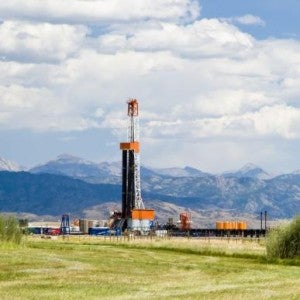Note: The Wyoming Outdoor Council has partnered with Environmental Defense Fund in an effort to help the state of Wyoming protect the public from dangerous air pollution in the Upper Green River Basin—and beyond.
This guest column by EDF’s Jon Goldstein provides some insight into how we might apply some lessons learned to protect people who live and work in new drilling boom areas.
Wyoming’s Opportunity to Head off Pollution at the Pass
 By Jon Goldstein, EDF | Bio | Published: July 11, 2014
By Jon Goldstein, EDF | Bio | Published: July 11, 2014
Yesterday we explored how Wyoming regulators and Governor Mead are making progress on a set of potentially strong air pollution measures in Pinedale and across the Upper Green River Basin of Southwestern Wyoming.
But today a similar drilling boom is happening in Converse and Campbell counties in the northeast area of the state. Unfortunately, none of these strong, sensible new air pollution requirements apply in these areas.
The numbers are stark. A full 80 percent of the current drilling in Wyoming is occurring out in the part of the state with the least restrictive air quality controls. The U.S. Bureau of Land Management is currently beginning a process to consider as many as 5,000 new oil and gas wells in Converse County alone, and equal or greater drilling activity is expected in neighboring Campbell County over the next decade.
Historically, Wyoming has focused its best air quality controls in the areas with the most drilling. In the past this has meant the state has implemented controls in the southwest corner of the state that led the nation. This has included requiring reduced emission “green completions” on new oil and gas wells, frequent inspections using accurate, instrument-based technologies to detect and fix pollution leaks, and requiring cost-effective, nationally leading controls on things like pumps, glycol dehydrators and tanks that are among the largest sources of harmful pollution.
It’s now time for the state to continue this tradition by expanding these sensible pollution control requirements statewide in order to capture the new drilling hotspots.
Fortunately, state regulators have an excellent playbook that could be quickly implemented statewide. The strong, sensible controls the state is in the process of implementing across the UGRB could be quickly implemented on a statewide basis. New areas feeling the brunt of the boom in oil and gas drilling should benefit from the lessons the state has learned in the Upper Green River Basin.
Taking these pollution controls statewide will help level the playing field for producers and offer the same strong level of health protection to all Wyoming residents. They also make good business sense.
It’s a fact that it is almost always less expensive to prevent pollution than it is to clean it up. The state, therefore, has an opportunity here to apply cost-effective pollution controls upfront and do it right from the start.
And many of these technologies would actually save the industry money over time. A recent report that EDF commissioned from the independent consulting firm ICF International shows that approximately 40 percent of hydrocarbon emissions from the nation’s oil and gas sector could be eliminated by 2018 at a total cost of just one penny per thousand cubic feet of gas produced. So, not only are these controls good for local air quality and the health of residents, they are good for the production companies’ bottom lines as well.
In the third reel of westerns, impending problems were often narrowly averted when the heroes saddled up and headed them off at the pass. When it comes to protecting air quality and the health of residents, that’s exactly the same opportunity the Cowboy State has here. Regulators, let’s ride.
– See more at: http://blogs.edf.org/energyexchange/2014/07/11/wyomings-opportunity-to-head-off-pollution-at-the-pass/#sthash.KJnh4kr8.dpuf

